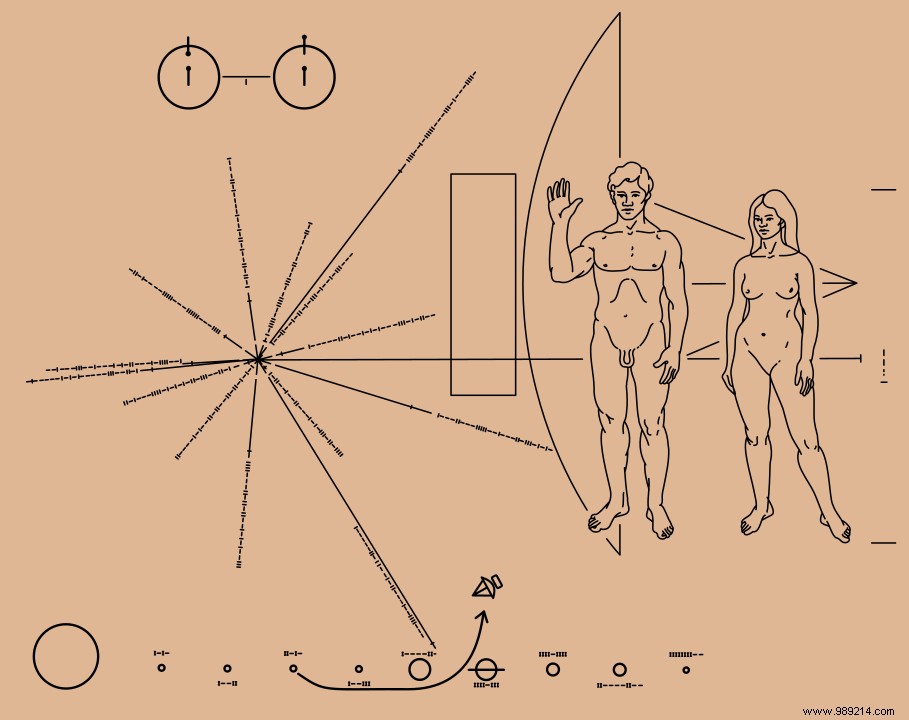Are we alone in the galaxy? Many wonder. In recent decades, some have even tried to signal our presence to possible extraterrestrials. Here are the different messages sent.
We start in 1962. At the time, Soviet researchers pointed a radio transmitter at Venus and greeted the planet in Morse code. This message included three words:Mir ("peace" and "world" in Russian), Lenin, and SSSR (the acronym in the Latin alphabet for the Cyrillic name of the Soviet Union). The attempt was purely symbolic. More than anything, it was for the Soviets to test a brand new radar aimed at mapping objects in the Solar System.
In 1969, a commemorative plaque was then placed on the Moon by the crew of Apollo 11. Fixed behind the rungs of the lunar module, it displays a representation of the Earth and a message of peace from US President Nixon.
Another attempt with a gold and aluminum plate attached to the Pioneer 10 probe, launched in April 1972 .
Designed by Carl Sagan and Frank Drake and drawn by Linda Sagan, it depicts a naked couple meant to represent humanity (the man's right hand is raised in salute) , a hydrogen atom and a drawing of the Solar System (with the placement of the Earth). Also shown are the trajectory of the probe and its size compared to our stature.
Finally, it represents the emission rate of fourteen pulsars. Concretely, the lengths of the lines show the relative distances of these objects from the Sun. The position of the Earth could therefore be calculated by triangulation.

Two years later,in 1974 , a team of scientists, still including astronomers Frank Drake and Carl Sagan, this time transmitted a radio message from the Arecibo Observatory in the direction of Messier 13. It is a star cluster found at around 25,000 light years. In other words, if the message finds recipients, we will not have an answer for at least 50,000 years !
The image, sent in binary code, represents a human silhouette, our average height, as well as the number of humans on Earth in 1974. Also appearing is the Solar System, a structure DNA double helix, a model of a carbon atom and a drawing of the Arecibo radio telescope.

We not only relied on the radio to communicate with aliens, but also launched ships containing earthly artifacts. In the Voyager 1 and 2 probes, launched in 1977 to explore the confines of our Solar System, a gold disc containing music, ambient sounds of the Earth and 116 images of our planet and the Solar System is indeed integrated.
These two discs are also accompanied by a stylus allowing them to be read and a source of uranium 238 (radioactive period of around 4.5 billion years) to determine the time elapsed since their launch.

It remains to be seen whether all of these posts can be found and decrypted. According to many specialists, the chances of this happening are almost nil . This outcome depends, of course, on whether or not there are extraterrestrials "in range" of our messages. This life would also have to listen carefully to radio signals and understand the math well enough to interpret them.
Finally, the messages we sent tend to assume that these aliens experience the universe the same way we do:with hearing and vision. But that may just not be the case.